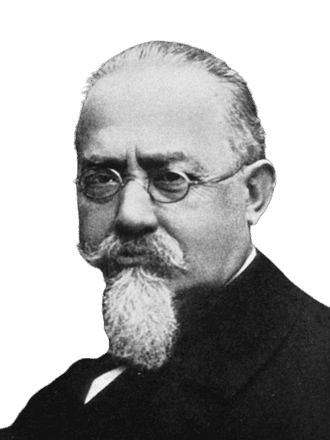Life and achievements
Early life
Cesare Lombroso was an Italian criminologist born in 1835 to a wealthy Jewish family in Verona, Italy. He was introduced to several academic fields, such as literature, linguistics, and archaeology, during his early years of learning and decided on medicine. His early education at the University of Padua and his further education in Vienna and Paris gave him an early inclination towards the human mind and body. Lombroso started his career as an army doctor and thus gained experience in identifying different diseases. Still, it was when he became the director of a psychiatric hospital in Pesaro that he became interested in the relationship between insanity and crime.
Lombroso's early medical education paved the way for his future work in criminology. In the mid-1860s, he started taking measurements of prisoners and soldiers, trying to find the morphological characteristics that would help to identify the deviant. During these years, Lombroso developed the theory of the 'born criminal,' which he detailed in his most famous work, L'Uomo delinquente, published in 1876. His early work is the foundation of his subsequent career, which would impact not only the field of criminology but also psychiatry and anthropology, mainly due to his rather provocative views on the biological causes of criminality.
Legacy
Cesare Lombroso is one of the most influential and, at the same time, one of the most controversial figures in the history of criminology. Although his theories on criminal atavism are now considered absurd, Lombroso's contribution to the formation of modern criminology cannot be overemphasized. Lombroso's work was one of the first to attempt to systematically study crime scientifically and called for positivism and biology in analyzing criminality. His focus on physical attributes as signs of deviance paved the way for forensic science's early development and played an essential role in recognizing criminology as a scholarly field.
Lombroso's theory of criminality being an innate characteristic influenced society's view on crime in the late 19th and early 20th centuries. Some people considered his theories as an attempt to explain social problems, while others accused him of determinism, racism, and sexism in criminal behavior. Lombroso's work paved the way for eugenics and scientific racism, especially in Italy, where his theories were applied in supporting fascist policies in the early twentieth century. However, the ideas that Lombroso put forward have been instrumental in the development of criminal profiling and the treatment of mentally ill criminals.
Milestone moments
Jun 26, 1876
The Publication of L’Uomo delinquente
In 1876, Cesare Lombroso published L'Uomo delinquente (The Criminal Man), where he came up with the idea of the 'born criminal.'
Lombroso's publication of L'Uomo delinquente can be considered a turning point in the analysis of crime from the moral and religious perspective to the scientific and biological one. His theories on atavism and the bodily characteristics of criminals became quite popular, although they were not without much criticism.
Jun 13, 1893
The Female Offender
In 1893, Lombroso published The Female Offender with his son-in-law Guglielmo Ferrero. This work was centered on the comparison of male and female criminals.
This work built on Lombroso's theory of atavism to address gender in criminality while also perpetuating damaging notions of women. Even though The Female Offender is a rather sexist work, it is still considered one of the most significant works in criminology.
Feb 8, 1904
The Need for the Standardization of the Treatment of the Mentally Ill in Asylums
In 1904, the Italian government enacted laws that provided for the treatment of the criminally insane in mental asylums, which Lombroso had been advocating for. His work contributed to the notion that mentally ill offenders should be treated differently from other prisoners, and this law enshrined those principles.
The law reinforced Lombroso's idea of the role of psychiatry in the criminal justice system and increased the power of psychiatrists to determine and manage mentally ill offenders. This was a significant event in the history of forensic psychiatry.
May 14, 1909
After Death: Spiritualism and Lombroso's Final Work
In 1909, After Death – What? was published, marking Cesare Lombroso's last work. Lombroso had become interested in spiritualism after attending séances with the medium Eusapia Palladino.
This change in perspective was a radical shift from his earlier scientific approach, which focused on biology and psychiatry. After Death combined his scientific background with his newfound interest in the paranormal.
